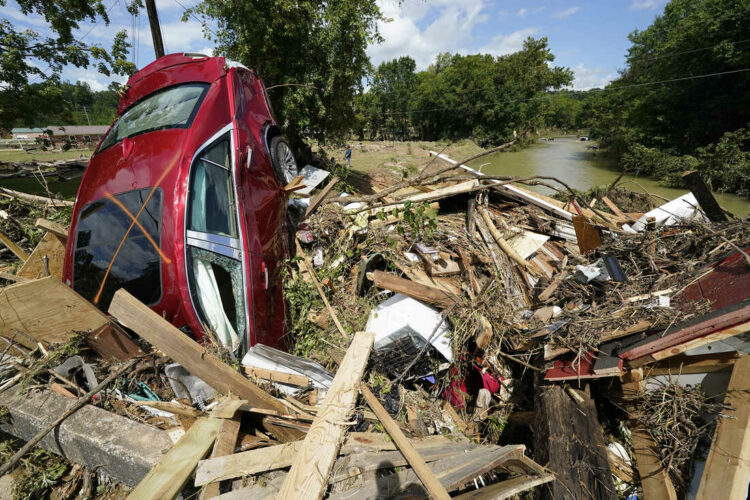In a mid year that has seen numerous glimmer flooding occasions all throughout the planet, the environmental change shocking tales have turned into really recognizable.
A record-breaking 17 crawls of downpour fell on Waverly, Tenn., on Saturday, releasing a scriptural deluge of water that moved through the space, lifting homes from their establishments, throwing vehicles to the side and killing no less than 22 occupants.
In July, a record downpour likewise dumped on pieces of Germany over a 12-hour time frame, and the resulting flood destroyed towns, killed in excess of 220 individuals and harmed 700 more.
Somewhere around 25 individuals were killed in Zhengzhou, China, in July following a whole year of downpour fell throughout the span of three days, catching drivers in underground passages and immersing the city’s metro framework.
In the Indian province of Maharashtra, the power of July’s rainstorm downpours was a lot of more regrettable than expected, killing in excess of 125 individuals, washing away whole towns and setting off avalanches.
As more examination is led into the reasons for these debacles, one thing is turning out to be clear: Climate change, which has expanded the measure of dampness in the environment, is assisting with escalating the deluges.
Exacerbated of environmental change.
“These floods have shown us that even evolved nations are undependable from serious effects of outrageous climate that we have seen and known to deteriorate with environmental change,” Friederike Otto, partner overseer of the Environmental Change Institute at Oxford University, said in an explanation. “This is a dire worldwide test and we need to move forward to it. The science is clear and has been for quite a long time.”
In like manner, the flooding in Tennessee this end of the week was important for a bigger example. While more limit than other ongoing occasions, it was the second destructive glimmer flood occasion in the express this year and follows other eminent storms that have as of late overpowered foundation in such states as Alabama, Arizona, Colorado, Indiana, Louisiana, Michigan, Missouri, Nebraska, New Mexico, New York, North Carolina, Texas, Utah and West Virginia.
Since preindustrial times, the world has warmed by almost 2 degrees Fahrenheit. For each 1.8 levels of warming, studies show, the climate holds 7% more dampness. At the point when conditions are correct, that dampness is released, and that is by and large the thing is being seen this late spring. As indicated by the most recent National Climate Assessment, the measure of downpour falling during weighty tempests in the Southeastern U.S. over the period somewhere in the range of 1958 and 2016 has expanded by almost a third.
The specific danger from a storm of the greatness experienced in Tennessee is hard to foresee, yet with numerous Americans presently examining moving to attempt to game the perils presented by environmental change, streak flooding highlights unmistakably on the rundown of ecological concerns.
“There is no spot in the United States where you shouldn’t be resetting your assumptions regarding Mother Nature disturbing your life,” Roy Wright, leader of the Insurance Institute for Business and Home Safety, told the Washington Post. “Environmental change has come bursting through the front entryways of America.”
Obviously, the equivalent is valid for the remainder of the world.
“Flooding from extraordinary summer precipitation is going happen all the more habitually,” Jess Neumann, a hydrologist at England’s University of Reading, told the Guardian. “No city, town or town is resistant to flooding and we as a whole need to make a hard move the present moment in case we are to keep impacts from deteriorating later on.”
With worldwide temperatures ready to keep ascending as humanity continues to add ozone harming substances to the climate, the possibility of considerably more blaze flooding fiascos is everything except guaranteed. In any case, as the latest report from the United Nations’ Intergovernmental Panel on Climate Change clarifies, there is as yet an opportunity for the world’s administrations to rally and produce an arrangement to hold temperatures back from pushing significantly higher. The following huge chance for such a settlement will come in late October, when world pioneers and their delegates will meet at the Glasgow Climate Change Conference.
Disclaimer: The views, suggestions, and opinions expressed here are the sole responsibility of the experts. No Unique Analyst journalist was involved in the writing and production of this article.

